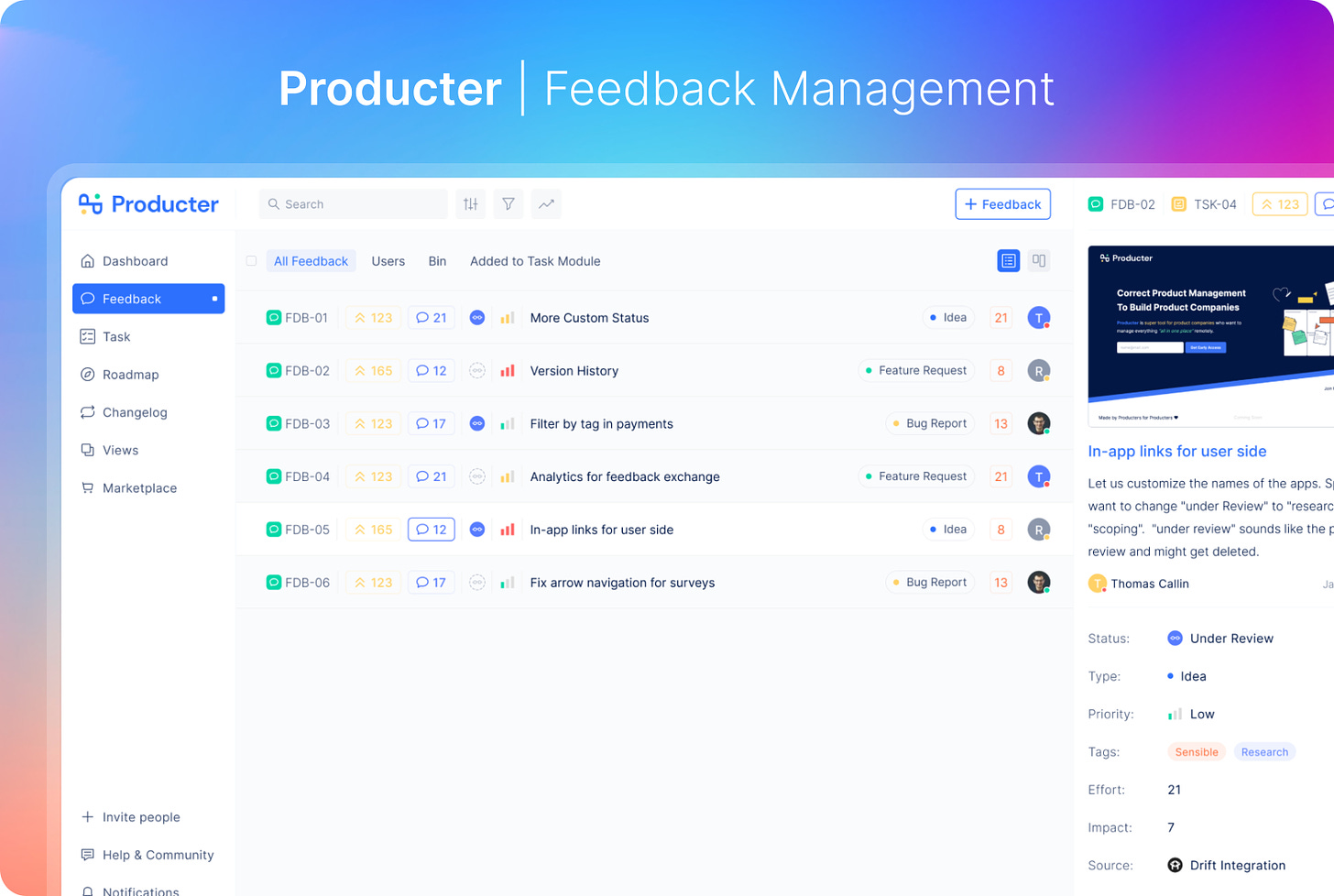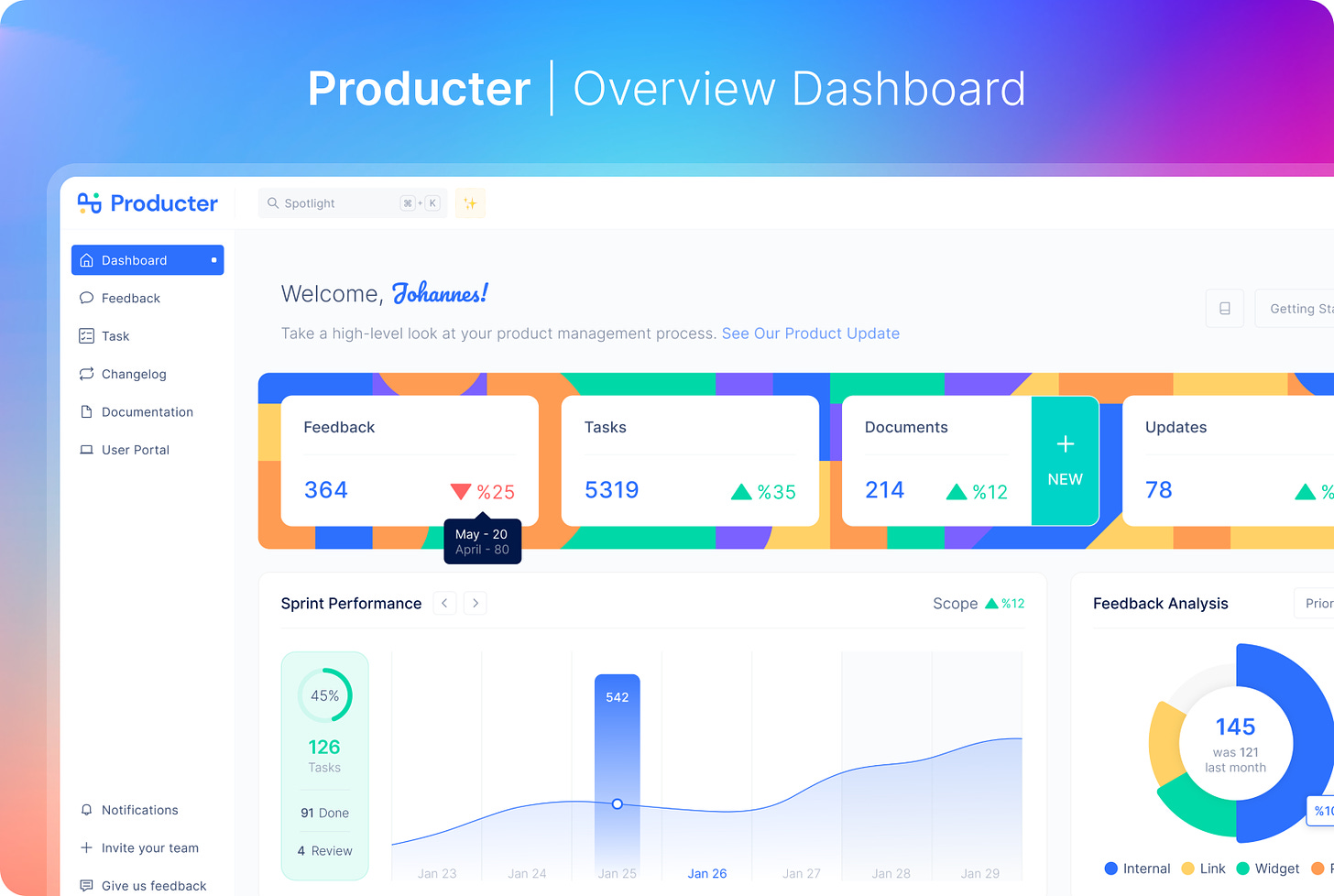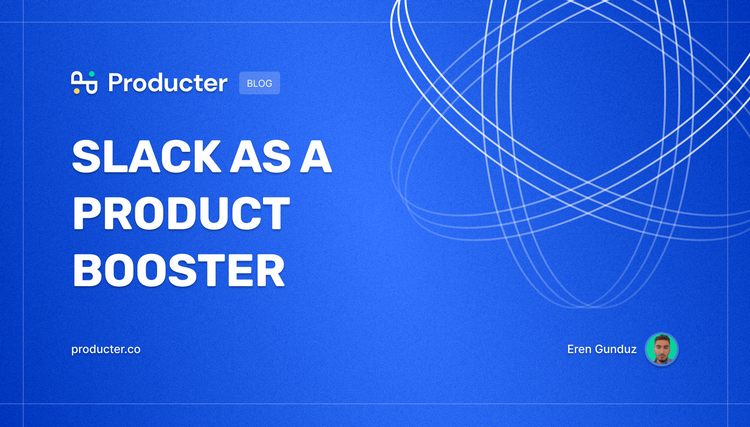TL;DR
- Product-Led Growth (PLG) is a customer-centric approach to business growth where the product is the primary marketing and sales tool.
- Key elements of Product-Led Growth include customer understanding, continuous improvement, data-driven decision-making, and customer-centric culture.
- Implementing Product-Led Growth may require changes to marketing strategies, sales techniques, product development, data setup, organizational structure, and supplier contracts. PLG is applicable to both B2B and B2C contexts.
- A hybrid approach, called Product-Led Sales, combines PLG principles with traditional sales and marketing strategies, proving especially beneficial in enterprise markets.
Driving Scalable Growth through Customer-Centric Product Management and Data-Driven Experimentation
Product-led Growth (PLG) is a customer acquisition and retention strategy that focuses on the product experience as the primary driver of growth.
In a PLG approach, the product is designed to be the primary marketing and sales tool and customer acquisition is driven by the product's ability to demonstrate value, solve customer problems, and drive adoption.
Product-Led Growth is a powerful and effective approach to growth that has been embraced by many successful companies in recent years.

In this guide, we will explore what product-led growth is, why it is important, and how to adopt a product-led growth approach in your organization.
We will also examine the marketing, sales, and product implications of PLG, as well as provide real-world examples of companies that have successfully implemented PLG.
Chapter 1: What is Product-Led Growth?
1.1 Other Industry Leaders’ Takes
Product-led growth has been gaining a lot of attention in recent years, and many industry leaders have shared their insights and perspectives on what it is and why it matters.
Here are a few takes from some prominent voices:
"Product-led growth means that the product itself becomes the primary driver of customer acquisition, conversion, and expansion."
- Wes Bush, author of "Product-Led Growth"
"PLG is a growth model where the product is the primary driver of customer acquisition, retention, and expansion."
- Blake Bartlett, Partner at OpenView
"Product-led growth is the idea that the product experience is so valuable that customers naturally want to share it with others."
- Brian Balfour, Founder, and CEO of Reforge
1.2 The Science Behind Product-Led Growth
At its core, product-led growth is about creating a product that solves a customer's problem and provides enough value that they are motivated to keep using it and share it with others.
This is achieved through a process of continuous experimentation, iteration, and optimization that is grounded in data and customer feedback.
The key elements of a product-led growth approach include:
- A deep understanding of the customer and their needs
- A focus on creating a product that provides clear value and solves a customer problem
- A commitment to continuous experimentation, iteration, and optimization
- A data-driven approach that uses customer feedback to inform decision making
- A culture of customer-centricity that puts the customer at the center of everything
Chapter 2: What Does Product-Led Growth Look Like in Action?
2.1.1 What Are the Marketing Implications of Product-Led Growth?
This means that marketing efforts should be focused on creating a product that is easy to use, solves a customer problem, and provides clear value.
This includes creating compelling product demos, using customer testimonials and case studies, and leveraging social proof to build trust and credibility.
2.1.2 Implications for Sales
In a product-led growth approach, the product is also the primary sales tool. This means that sales efforts should be focused on guiding customers through the product experience and helping them understand how the product can solve their problems and provide value.
This includes offering free trials or demos, providing education and training materials, and using customer success stories to demonstrate the value of the product.
2.1.3 What Are the Product Implications of Product-Led Growth?
In a product-led growth approach, the product is the center of the customer experience. This means that the product must be designed with the customer in mind, with a focus on ease of use, simplicity, and clarity.
This includes using customer feedback to inform product development, iterating and optimizing based on user behavior and data, and building features that solve customer problems and provide clear value.

Chapter 3: How to Adopt the Product-Led Growth Approach
3.1 Is Product-Led Growth the Right Fit for You?
Before adopting a product-led growth approach, it's important to assess whether it is the right fit for your organization.
Here are a few questions to consider:
- Does your product solve a real customer problem?
- Is your product easy to use and understand?
- Do you have a strong product development and experimentation culture?
- Are you able to collect and analyze customer feedback and data?
- Are you willing to invest in creating a product that is the primary driver of growth?
If you answered "yes" to these questions, then a product-led growth approach may be a good fit for your organization.
3.2 Applying the Product-Led Growth Approach
If you've decided that a product-led growth approach is a right fit for your organization, here are a few steps to get started:
3.2.1 Optimize Your Data Setup/Experimentation Infrastructure for Product-Led Growth
To succeed with a product-led growth approach, you need to have a robust data setup and experimentation infrastructure in place.
This includes collecting and analyzing customer data, creating user segments, and running experiments to test and optimize the product experience.
3.2.2 Re-Thinking Your Organizational Structure
Adopting a product-led growth approach requires a culture shift that puts the customer at the center of everything.
This may require rethinking your organizational structure, hiring practices, and performance metrics to ensure that everyone in the organization is aligned around the goal of creating a product that provides value to the customer.
3.2.3 Structure Supplier Contracts for Product-Led Growth Suitability
If you work with suppliers or vendors, it's important to structure your contracts in a way that aligns with a product-led growth approach.
This may include including clauses around data sharing, experimentation, and performance metrics.
3.2.4 Applying the Product-Led Growth Approach: A Quick Summary
To apply a product-led growth approach, you need to:
- Focus on creating a product that solves a customer problem and provides value
- Use data and customer feedback to inform product development and optimization
- Build a culture of experimentation, iteration, and continuous improvement
- Put the customer at the center of everything
3.3 Shifting to a Product-Led Approach
Shifting to a product-led approach requires a mindset shift and a commitment to continuous experimentation and optimization.
It's important to set clear goals and metrics for success and to continually test and iterate based on data and customer feedback.
Chapter 4: B2B vs. B2C Archetypes: Do They Matter in Product-Led Growth?
4.1 Are B2B Customers Acting Like B2C Buyers?
One common question around product-led growth is whether it is applicable to B2B companies. While there are some differences between B2B and B2C customers, the underlying principles of product-led growth apply to both.
B2B customers are still looking for products that solve their problems and provide value, and they still expect a seamless and easy-to-use product experience.
4.2 Enterprise and Other Market Adoption Behavior
While product-led growth is applicable to both B2B and B2C companies, the adoption behavior may differ based on the market.
In the enterprise market, for example, adoption may be slower and require more education and support.
However, the underlying principles of creating a product that solves a customer problem and provides value still apply.
Chapter 5: Product-Led Growth vs. Sales-Led Growth: A Quick Recap Comparison
In a sales-led growth approach, the focus is on using sales and marketing tactics to drive customer acquisition and retention. In a product-led growth approach, the focus is on creating a product that is the primary driver of growth.
While both approaches have their strengths and weaknesses, product-led growth has several advantages over sales-led growth, including:
- Better customer retention: When customers are deeply engaged with your product and see its value, they are more likely to stick around and renew their subscription or purchase again.
- Lower customer acquisition cost: When your product is the primary driver of growth, you don't need to spend as much on sales and marketing tactics to acquire new customers.
- Better scalability: A product-led growth approach allows you to scale more easily, as the product is doing the heavy lifting of customer acquisition and retention.
However, it's important to note that a product-led growth approach still requires some sales and marketing efforts to support the product and drive adoption.

Chapter 6: PLS - Product-Led Sales
Product-led sales (PLS) is a hybrid approach that combines the principles of product-led growth with traditional sales and marketing tactics.
PLS involves using the product as the primary driver of growth while also leveraging sales and marketing to support and accelerate adoption.
PLS can be particularly effective in enterprise markets, where adoption may be slower and require more education and support.
By focusing on creating a product that solves a customer problem and provides value while also providing the necessary support and education, PLS can help accelerate adoption and drive growth.
Chapter 7: Summary
Product-led growth is a powerful approach to driving customer acquisition and retention.
By focusing on creating a product that solves a customer problem and provides value and using data and customer feedback to continuously improve the product experience, organizations can create a sustainable and scalable growth engine.
To adopt a product-led growth approach, organizations need to optimize their data setup and experimentation infrastructure, re-think their organizational structure, and structure supplier contracts for product-led growth suitability.
It's also important to assess whether a product-led growth approach is a right fit for the organization and to continuously test and iterate based on data and customer feedback.
While product-led growth is applicable to both B2B and B2C companies, the adoption behavior may differ based on the market. PLS is a hybrid approach that combines the principles of product-led growth with traditional sales and marketing tactics and can be particularly effective in enterprise markets.
Overall, product-led growth is a customer-centric and data-driven approach to driving growth and can help organizations build a sustainable and scalable growth engine.
Frequently Asked Questions
How does a product-led growth strategy impact the traditional roles within an organization?
A product-led growth strategy usually results in a restructuring of traditional roles. For instance, marketing teams might pivot from broader outreach initiatives to a focus on product demonstration and user experience. Sales teams might shift from cold pitching to guiding potential customers through product usage and benefits. The product development team is likely to work more closely with customer feedback and data analysis teams to continually improve the product.
What are the potential challenges of adopting a product-led growth approach?
Adopting a product-led growth approach may require substantial organizational changes, which can be challenging. It necessitates a deep understanding of customers' needs and the ability to translate those needs into product features. It also requires a robust data analysis infrastructure and a company culture that embraces continuous learning and iteration. Finally, aligning all departments around the product and customer experience can be a substantial undertaking.
How can companies measure the success of their product-led growth strategies?
Success can be measured through several key performance indicators (KPIs), including user engagement metrics, customer acquisition costs, customer lifetime value, churn rate, and net promoter score. Additionally, the rate of new feature adoption, product usage patterns, and overall business revenue and growth can also indicate the success of product-led growth strategies.
Can you provide more examples of companies that have successfully implemented product-led growth strategies?
Several companies are well-known for their successful product-led growth strategies. These include Slack, which prioritized creating an easy-to-use and intuitive product that effectively solves team communication issues, and Zoom, which focused on providing a superior video communication experience to rapidly acquire and retain users. Dropbox, Atlassian, and Calendly are other examples of successful product-led companies.
What tools and technologies can help facilitate a successful product-led growth approach?
Producter is a comprehensive tool that can be exceptionally valuable in implementing a successful product-led growth approach. It comes equipped with features that are designed to streamline the entire product management process.
Firstly, Producter excels at collecting feedback from various channels and turning them into actionable tasks. It not only captures feedback from customers but also automates customer communication. This ensures that all valuable insights from customers are accounted for and used to improve the product.
Another feature of Producter is a dedicated user portal. This portal serves as a public feedback board where customers can openly share their suggestions or report issues. This openness allows for the transparent collection of valuable user feedback.
Moreover, Producter provides a public roadmap that allows teams to communicate their product plans and progress to their user base, thereby enhancing customer trust and engagement.
Lastly, Producter includes a changelog feature that allows companies to keep their users updated on new features, improvements, and bug fixes. This helps the user understand the ongoing efforts to improve the product based on their feedback and is a key factor in improving user retention.
All these features combined make Producter a powerful ally in adopting and executing a successful product-led growth strategy.
How to maintain the balance between maintaining product excellence and the drive for new customer acquisition in a product-led growth strategy?
Striking this balance requires a clear understanding of customer needs and focusing on solving them excellently through the product. At the same time, marketing and sales efforts should be aligned to demonstrate and amplify the product's value to attract new customers. Regular customer feedback and robust data analysis can help ensure the product maintains its excellence while also driving customer acquisition.
Can product-led growth work for any product or are there specific types of products or industries where it's more likely to be successful?
While PLG can potentially be applied to any product, it tends to work best with products that can clearly demonstrate their value through usage, especially in software or digital product sectors. Industries, where customers have a high need for self-service and instant gratification are also conducive to PLG.
How does the product-led growth approach align with other modern business strategies like agile development or lean startup methodologies?
PLG aligns well with both agile and lean methodologies as all these strategies focus on customer value, quick iterations based on feedback, and data-driven decision-making. In fact, organizations that follow agile or lean practices may find it easier to adopt a PLG approach, given the commonalities in philosophy and execution.
What are some common misconceptions about product-led growth?
One common misconception is that PLG means you don't need sales or marketing teams. While the product is the primary growth driver in PLG, sales and marketing play crucial roles in amplifying the product's value proposition, guiding potential customers, and supporting customer retention. Another misconception is that PLG is only for software or tech companies. While it's true that PLG has been popularized by tech companies, the principles of PLG — solving customer problems, demonstrating value through the product, data-driven decision-making, and customer-centricity — can be applied across industries.
How to handle negative customer feedback or setbacks in a product-led growth strategy?
Handling negative feedback is essential for a successful PLG strategy. First, it's important to see negative feedback as an opportunity to learn and improve. The feedback should be analyzed to understand the root cause of the issues. Next, consider whether these issues are isolated or represent a broader problem that needs to be addressed. Use this feedback to inform your product development process and continuously improve your product. Communication is also key - responding to customers who leave negative feedback, letting them know their feedback is valuable, and informing them when their feedback leads to improvements. For setbacks, a strong culture of experimentation and learning is critical. See setbacks as learning opportunities and use them to inform future strategies and decisions.
Producter is a product management tool designed to become customer-driven.
It helps you collect feedback, manage tasks, share product updates, create product docs, and track your roadmap.






